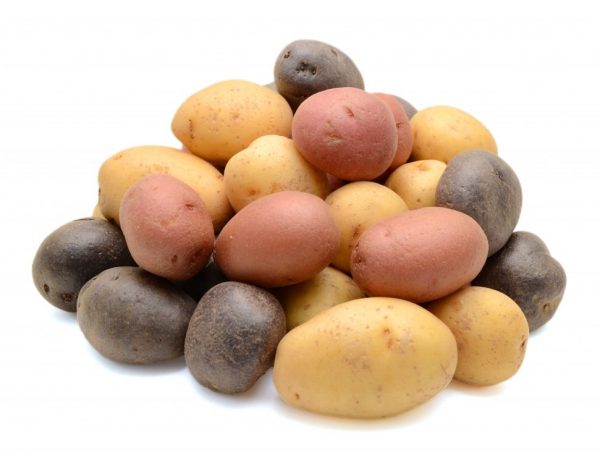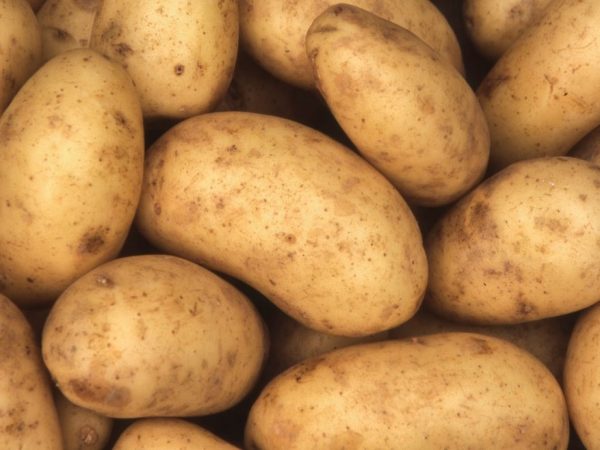Popular potato varieties that the Colorado potato beetle does not eat
Every farmer wondered at least once: are there potato varieties that the Colorado potato beetle does not eat? A significant part of the crop is lost every year from a harmful insect. This is because the beetle can develop immunity to insecticides, and also tolerates cold weather, burrowing deep underground. In the course of long research, experienced breeders still managed to develop a small number of potato varieties that are completely resistant to the Colorado potato beetle.

Popular potato varieties that the Colorado potato beetle does not eat
History of creation
Every farmer knows firsthand how dangerous the Colorado potato beetle is. It is easily recognizable by its bright color - black and orange stripes on the wings of adults. Larvae are pink, clutches of eggs are orange. The parasite is able to destroy and spoil half of the harvest. In the fight against beetles, various methods are used: they grow resistant species, use poison, and collect pests by hand.
Back in the 1950s and 1960s, Russian farmers began to think about developing new types of potatoes that would not attract Colorado beetles. At first, scientists adhered to the version that if you cross the tubers of wild potatoes with cultivated fruits, then a culture will immediately come out that the beetle will avoid. But in practice, the theory failed: having grown a crossed vegetable, everyone was convinced that such fruits were not suitable for use in food.
Soon, attempts were resumed to breed a resistant variety to the invasion of insects. Only now it was necessary to work more on the nutritional qualities of the tubers. Therefore, they began to develop a species that has the ability to regenerate after insects eat it. Also, the variety should have become unsuitable for larval growth.
Features of a resistant species
So, you need to figure out what qualities a culture should have in order for beetles to bypass it. A huge number of potato species that tolerate weather conditions are immune to disease. But very rarely, all these qualities are combined with resistance against pests such as the Colorado parasite. Insects happily eat both the fruits and foliage of the culture. What repels an insect?
- The structure and structure of the shrub. If the varietal potato bush has thick stems and leaves dense in structure, then the parasite will bypass it - they will not eat the dense bush.
- Also, the insect is not attracted to the bent leaves of the bush, it is inconvenient for them to lay off their offspring.
- Insect-resistant varieties, a high content of glycoalkaloids - substances that reduce the activity and growth of insects, and subsequently reduce their fertility.
Resistant Vegetable

Unpretentious varieties
Among the varieties resistant to diseases and weather conditions, it is possible to distinguish only a very small number of species resistant to parasites, especially to the Colorado potato beetles.
If you are going to grow potatoes that are immune to parasites, you should familiarize yourself with their properties and structure. There are only seven such cultures - this is Bryansk Nadezhny, Zarevo, Kamensky, Lasunok, Nekulinsky, Temp, Early Morning. Insects do not eat these varieties.
Bryansk reliable
This type of vegetable crop is very productive. Has excellent taste and quality indicators. In terms of ripening speed, it is mid-season, resistant and hardy to Colorado and other parasites.
The fruit is oval in shape, the skin is thin, easy to peel. The pulp is dense in structure. The disadvantage of culture is that it is not resistant to nematodes and late blight.
Glow
The species perfectly tolerates all weather conditions, therefore it grows in all regions of the country. Perfectly transported over long distances, has a high degree of keeping quality.
Fruits are pink in color, round in shape. The pulp boils well during cooking. The only drawback is the tendency to cracking the tubers, in order to avoid this, potassium should be added to the soil.
Kamensky
Due to the large and rough leaves of the bush, this species is not attractive to Colorado. It will ripen very quickly, drought-resistant.
The skin of the fruit is slightly rough, which avoids damage to the tubers. Has a strong immunity to cancer and late blight.
Lasunok
The fruit is round, brown in color. Suitable for all kinds of dishes. Often used commercially in the manufacture of chips and starch.
The culture is mid-season, unpretentious when grown. Resistant to late blight and nematode.
Nekulinsky
The variety has taken root in all markets of the country for 20 years already, it is chosen by experienced farmers for sowing huge areas. Ripening of fruits is late, but this does not prevent the culture from conquering more and more sowing areas year after year.
The species is chosen for its high starch content up to 20% and strong immunity to diseases and pests.
Pace
If you need a variety for long-term storage and long-distance transportation, then Temp is what you need. Resistant to mold and other infections, it easily tolerates drought and heat.
The peel is beige, the size is large, the shape of the fruit is oblong. Great for making alcohol and chips.
Morning earlier
The fruits are not large, beige in color. The pulp is boiled, the starch content is 15%.
Morning previously resistant to fungal infections, has good keeping quality, excellent transportable. Suitable for the preparation of many dishes containing potatoes in the recipe.
Actions to repel parasites
As it became known, Colorado chooses shrubs for food that are weakened and not fertilized. If you provide proper care and attention to your future harvest, then insects are not afraid of you. The parasites do not eat healthy shrubs.
Do not rely only on the properties of a vegetable crop. You should also do your best to properly grow and season your potatoes. To keep the bush healthy and not so attractive among the parasites, follow the rules of the professionals.
- The culture requires constant feeding with organic substances. Fertilization with calcium is perfect, healthy and strong stems and root system will not give the insect a single chance to spoil the collection.
- To grow a more resilient vegetable crop, you need to start preparing for growth even during planting. As you know, pre-germinated tubers are more persistent and hardy.
- Also, before planting, the soil should be fertilized; for this, manure or liquid fertilizers are introduced into the soil.
- To get rid of the progeny of beetles, the sowing sites are dug up in the fall, then wintering insects die from frost.
- It is also possible to treat the tubers with insecticides immediately before planting.


